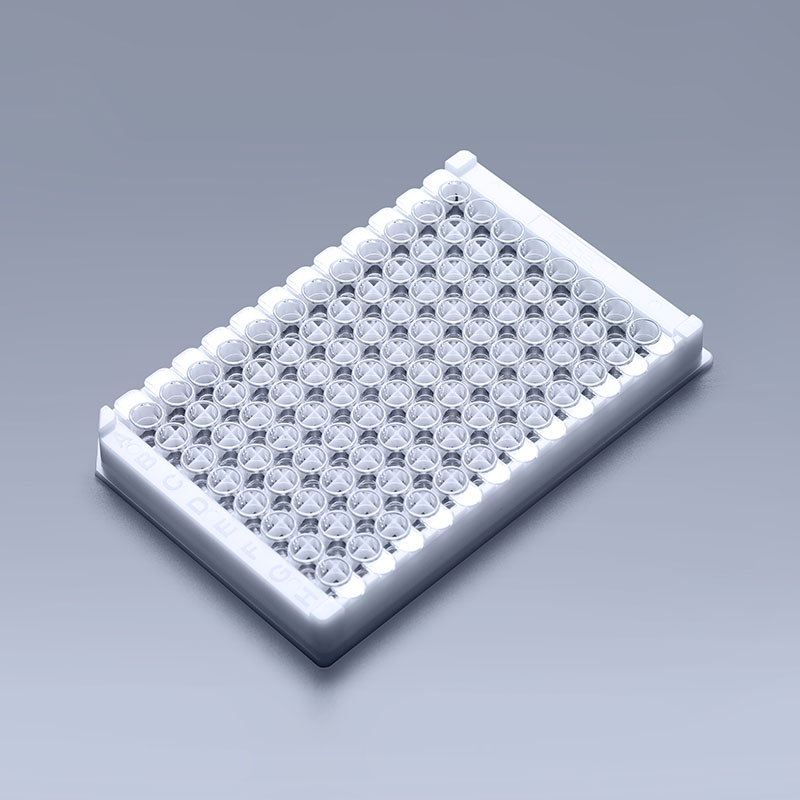Classification and characteristics of elisa plate
Enzyme-Linked Immunosorbent Assay (ELISA) is a commonly used laboratory technique that allows the detection and quantification of specific proteins or antibodies in a sample. ELISA plates, also known as microtiter plates, are the primary tools used in ELISA experiments. These plates are typically made of a transparent polystyrene material and consist of multiple wells arranged in a grid-like pattern.
Here are the classifications and characteristics of ELISA plates:
1.Well Types:
a. Flat-bottomed wells: These wells have a flat bottom surface and are commonly used for colorimetric ELISAs, where the absorbance of the wells is measured.
b. Round-bottomed wells: These wells have a rounded or conical bottom and are often used for fluorescent or luminescent ELISAs, where the signal is measured in a plate reader.
2.Coating:
a. Non-specific binding (NSB) plates: These plates have a high-binding surface that maximizes the adsorption of proteins or antibodies to the plate's surface. They are ideal for assays where high sensitivity is required.
b. Blocking plates: These plates are pre-coated with blocking agents (e.g., BSA or gelatin) to prevent non-specific binding of proteins and reduce background noise. They are used to minimize false-positive signals.
3.Surface Chemistry:
a. Polystyrene plates: Polystyrene plates are the most common type and offer good binding capacity for proteins and antibodies.
b. Polyvinyl chloride (PVC) plates: PVC plates are less common but can be used in certain applications.
c. Specialty plates: Some ELISA plates have specialty coatings or modifications to enhance specific interactions or improve sensitivity. For example, some plates have a hydrophilic surface for better liquid distribution.
4.Well Format:
a. 96-well plates: These are the most commonly used format, with 96 wells organized in a 8x12 grid.
b. 384-well plates: These plates have smaller wells in a 16x24 grid, allowing higher throughput and reduced sample volume requirements.
c. Other formats, such as 24-well or 384-well plates: These formats may be used for specific applications or when smaller sample sizes are available.
5.Sterility:
a. Sterile plates: Some ELISA plates come pre-sterilized and individually wrapped for use in sterile laboratory conditions or cell culture applications.
6.Compatibility:
a. Plate readers and washers: ELISA plates are designed to be compatible with automated plate readers and washers, allowing for efficient sample processing, data acquisition, and analysis.
When selecting an ELISA plate, it's important to consider the specific requirements of your assay, such as the type of detection method, sample volume, and sensitivity needed. Choosing the appropriate plate ensures optimal performance and reliable results in your ELISA experiments.
 Elisa Plate
Elisa Plate
评论
发表评论